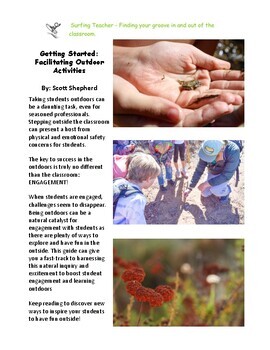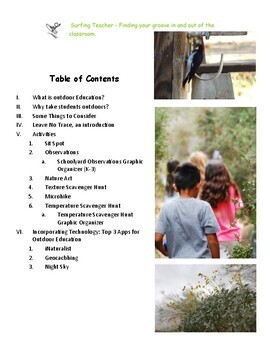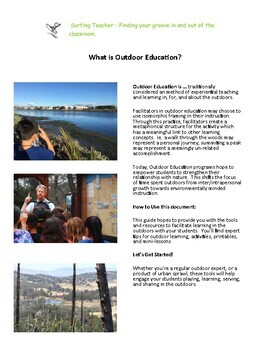Start your own Outdoor Education program today!
- PDF
What educators are saying
Also included in
- These resources can help you to build a comprehensive guide for teaching Leave No Trace Environmental Ethics with Elementary Students. Leave No Trace's 7 Principles help students to ensure that their time spent outdoors doesn't negatively impact the environment. Our comprehensive guide for facilitPrice $22.00Original Price $27.50Save $5.50
- These products contain everything you need to plan, fund, and grow a sustainable outdoor education program. This may be directly involved in an existing school, a non-formal education program at a local park or garden, or a formal outdoor program complete with fieldwork. These guides are designedPrice $22.04Original Price $27.55Save $5.51
- Distance learning isn't easy for anyone including teachers, students, parents and administrators. Finding innovative ways to facilitate synchronous and asynchronous learning takes time, effort, and intentionality. This bundle of resources provides low-prep, easy to use activities for your virtualPrice $19.60Original Price $24.50Save $4.90
Description
This Guide contains over 10 activities for leading students into the outdoors. These include printable graphic organizers and links to materials for facilitating outdoor activities. These include best practices in outdoor, environmental, experiential education programs rooted in student-centered learning. You'll find quick and easy ways to get your students playing and learning outdoors while incorporating NGSS standards.
That being said, taking students outdoors can be a daunting task, even for seasoned professionals. Stepping outside the classroom can present a host from physical and emotional safety concerns for students.
This guide also provides expert tips and tricks for keeping your students safe outside.
Download to discover new ways to empower your students to strengthen their relationship with the natural world!
Other resources to check out:
- Upcycling nature journals for future bird observations
- Vertebrate and Invertebrate scavenger hunt
- Other great scavenger hunts for for gardens, beaches, native plants, sounds, and even temperatures.
If you like this product please leave a review!








